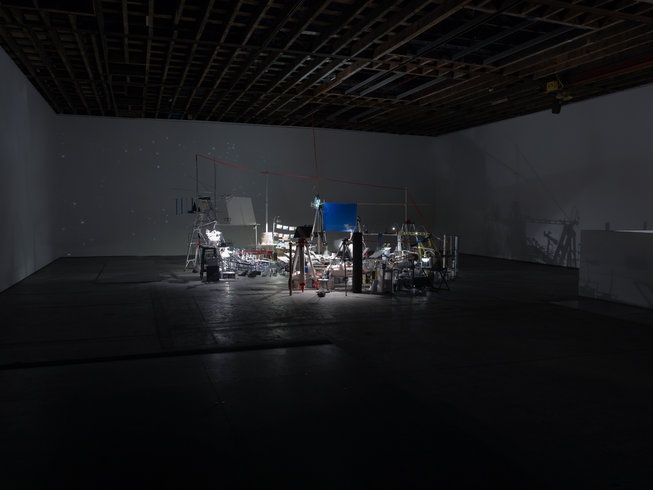 |
| Total Recall 1987 |
www.youtube.com/watch?v=gHVwG6Sn-yQ
LIVERPOOL.- Tate Liverpool presents the work of American artist Gretchen Bender (1951–2004). Bringing together a focused selection of works including Total Recall 1987, a monumental 24-monitor multi-projection screen installation, the exhibition is the first solo exhibition of Bender’s work in the UK.
Bender came to prominence during the 1980s and was closely associated with the ‘Pictures Generation’ of artists whose work appropriated mass media imagery and its clichés for critical ends. In response to an increase of political and corporate ideologies being embedded into mass media, Bender developed a coherent and critically acclaimed body of work becoming especially renowned and celebrated for her large-scale video theatre installations and screen prints on tin signs.
Her practice extended further to include works for commercial broadcast including music videos, often made in collaboration with the American artist Robert Longo (b. 1953), for bands including New Order, Megadeth, and Babes in Toyland. A major highlight of the exhibition is Total Recall 1987, a seminal work first shown at The Kitchen in New York, it critiques the accelerated image-flow of television and the violence of images in a society now shaped by their commodification. Total Recall’s stacked monitors each present multiplied fragments of television imagery with aggressive barrage editing and sound. The work seeks to overload the viewer’s perception by montaging imagery of Cold War-era military hardware, animated corporate logos and Hollywood film iconography, alongside commercials for consumer recording devices such as video cameras and recorders.
If Gretchen Bender (1951-2004) is less recognized than some artists of her generation, "Tracking the Thrill" should initiate a remedy. Organized by artist Philip Vanderhyden and the Poor Farm (an experimental venue in the countryside of Wisconsin run by artists Michelle Grabner and Brad Killam, now in its fourth year), this exhibition presented a survey of Bender's video work for broadcast television, as well as two monumental, monitor-based pieces of what she called electronic theater.
Bender began exhibiting at Nature Morte in the East Village in 1983. Close with Robert Longo, Cindy Sherman and others associated with the critical strategies of appropriation, she set out to infiltrate the corporate domain of mass-media representation-and the flattening image-flow of television in particular, where politics and entertainment are conflated-so as to highlight the insidious qualities of big business's ideological operations. Her approaches for doing so, as seen here, were abstraction, acceleration and multiplication.
On the main floor were two multi-monitor videos, Wild Dead (1984) and Total Recall (1987), which have not been seen by an audience in over 20 years. Total Recall (22 minutes) was the most compelling work on view. Screened at set times in a theatrical environment, as if it were a performance with the TV sets on stage as actors, the work features quasi-narrative movements of imagery orchestrated across eight channels on 24 monitors and two projection screens. It includes a soundtrack composed by Stuart Argabright (of the electronic band Ike Yard) and animation sequences designed on a flight simulator by artist Amber Denker. In effect, it is nearly overwhelming.

On the one hand, slowed down and multiplied fragments of commercials populate the monitors: a happy factory worker at GE who "brings good things to life," high-tech weaponry promoted in military videos, and razzle-dazzle, animated corporate logos. On the other hand, we see commercials for consumer recording technologies (cameras and camcorders) and footage from then-topical Hollywood films such asSalvador (1986) and Under Fire (1983) about photographers on assignment in places where the U.S. was supporting repressive regimes.
As an implicit portrait of the military-industrial-media complex, Total Recall confronts the spectator with a mesmerizing critique of the violence of images in a society now predicated on their modification. In a media culture saturated by corporate self-representation, it is, Bender argued, images themselves that prevent us from seeing the reality of the world we've constructed.





